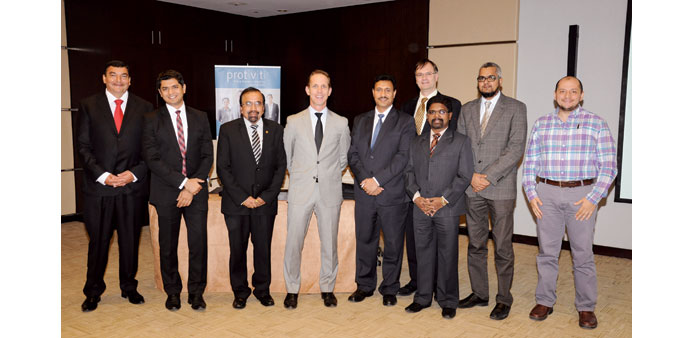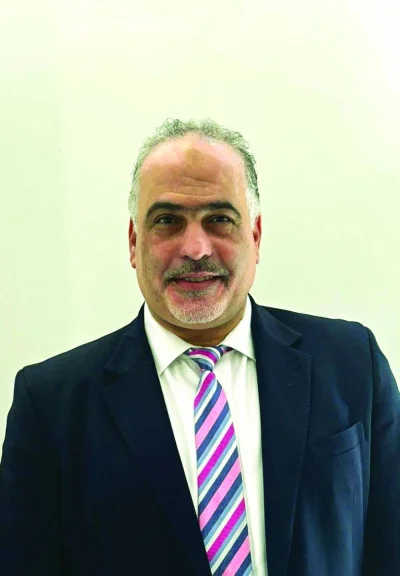Coxworth with IIA Qatar board members at the seminar.
Qatar, which is now undertaking big-ticket infrastructure development amid fiscal austerity plans, can achieve cost savings of 5% to 10% of the total contract value through effective programme and project management and control, according to an expert.
“Our experience indicates that through effective programme and project management and control, the owners can typically achieve cost savings of 5%-10% of total contract value as well as mitigate significant project risks and prevent fraud, waste, and abuse,” Randall Coxworth, managing director at Protiviti, Los Angeles, USA Office, told a seminar hosted by the Institute of Internal Auditors Qatar chapter and sponsored by Protiviti Qatar.
His suggestion comes in the backdrop of general contractors meeting cost and schedule expectations on less than 12% of projects and that 40%-50% of major construction projects run longer than the planned and incur significant cost overruns.
He said the global cost of fraud and corruption in the construction industry could result in potential annual losses to owners in excess of $1.5tn by 2025.
Andrew North, managing partner of Protiviti Qatar said the control and risk management of large capital projects is a vital element in fulfilling Qatar’s National Vision 2030.
Capital projects per se, contain several inherent risks if controls are not built in at the appropriate phases and if management and auditors do not focus on the key performance criteria.
Randall talked about “risk-based capital project audit roadmap,” where high-value focus areas and capital project risks are identified, assessments are done and then a capital project audit road map is developed.
Several potential risks were discussed to emphasise his view that risk management must follow the project life cycle and it should be a continuous process throughout the project.
“There is an integrated link between these elements of infrastructure and the level of maturity and capability of the organisation,” he said.
The potential risk areas such as scope, cost, time, risk, quality, human resource, communication, safety, procurement, finance and claim were elucidated with check lists on respective control requirements and appropriate audit procedures” said Sundaresan Rajeswar, an IIA board member who coordinated the event.



